Why is it that quality control at large thrift stores seems to be nearly non-existent?
It’s incredibly disappointing to pull something off the rack only to discover obvious holes and splotches:
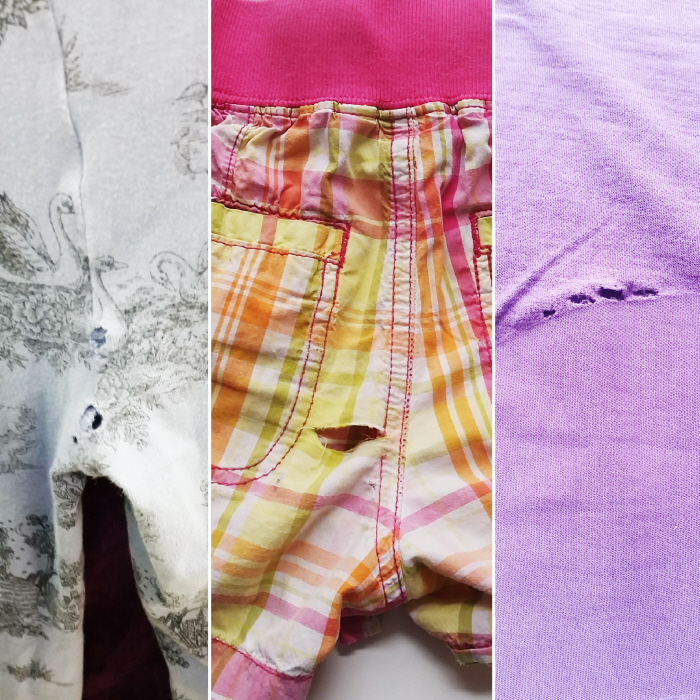
How do these items make it on to the shop floor?
(even worse? when I took them to a member of staff and suggested that the damaged items should go to the recycling centre they went and hung them back on the rack for sale, pfffft!)
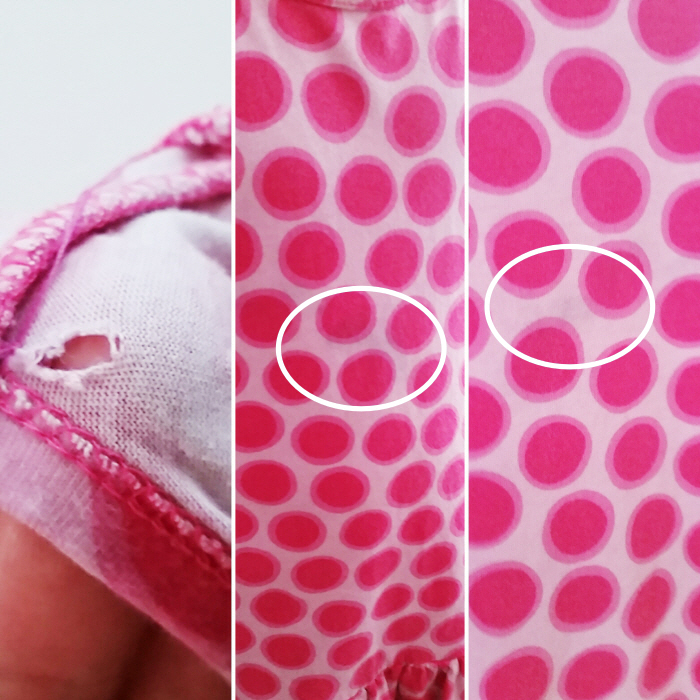
Unfortunately, no matter how diligent I am about checking for damage, there’s always an item that manages to sneak in and make it home with me. Fortunately I have a quick and easy Refashion Fix for Thrifted Rips and Stains to mend those disappointing thrift scores in a flash:
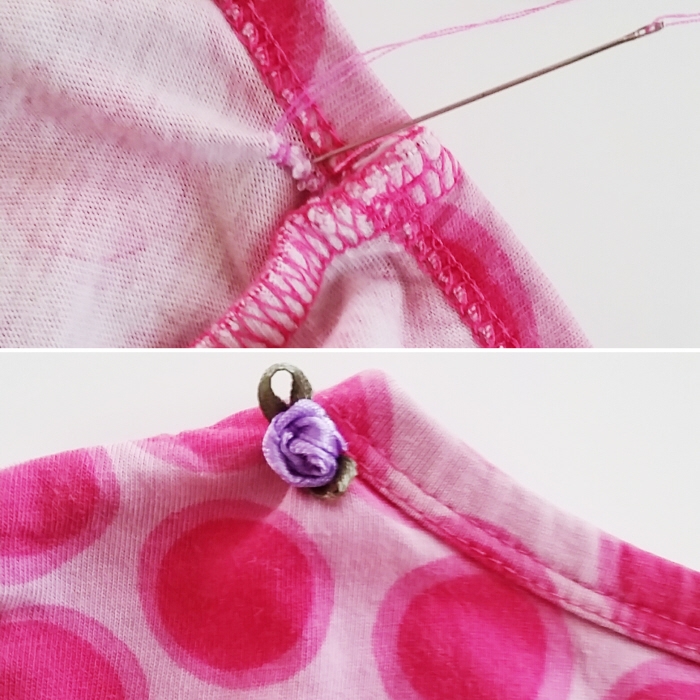
The tear in the shoulder needed a bit of TLC on the inside and a little blossom on the outside to conceal the stitching.
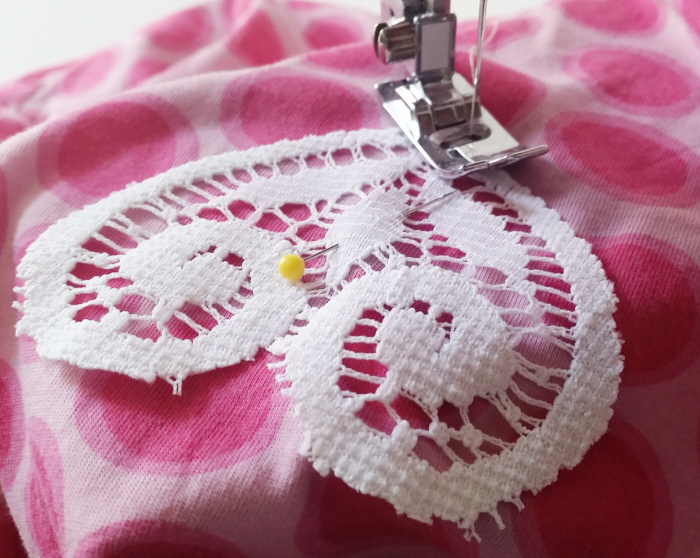
Then those unattractive stains got a bit of camouflage with some leftover lace bits from my scrappy stash!

No more stain on the front!

That sneaky shoulder hole has been replaced with a pretty bloom!

+ that pesky stain on the back has disappeared too!
Should thrift stores have (much) higher quality control standards? Share your thoughts below!
On a side note: that groovy bag I made for my munchkin in 2014 from her baby skirt is still going strong and her absolute fave – grab the tutorial right here!
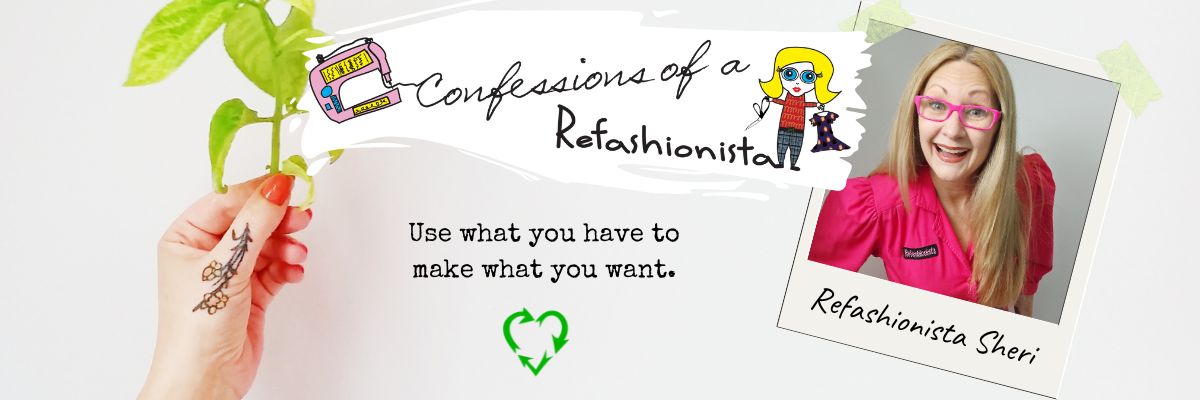







I just bought a top that I adore at our local Salvation Army. I’ve worn it several times even though it does have two very small stains on the front. Both look like pen. They don’t immediately grab the eye but I have wondered what I could do to “fix” them. It’s a solid color tunic and the stains are in awkward places on the front, so a lace appliqué/patch wouldn’t really work. Any other ideas?
Take a peek at how I completely removed and replaced an incredibly awkward (& large) “statement” from a lovely lace dress: http://awesomesauceasshattery.com/2015/11/11/how-to-refashion-a-lace-dress/
You could also try creating a fun pattern using buttons stitched over the stains as a starting point or perhaps some fabric pen art to cover them? Depending on the colour and fabric of the top bleach or dye could work as well, here’s my top tips: http://awesomesauceasshattery.com/2015/11/03/my-top-tips-techniques-for-bleaching-clothing/ 😀 http://awesomesauceasshattery.com/2015/10/27/my-top-tips-for-dyeing-clothing/
As a Manager for a non-profit thrift shop (Canada), we try very hard to sort out the damaged goods, but inevitably some slip by, and sometimes clothes get damaged on the floor by customers. If a customer brings a damaged item to our attention, we will either give them a deep discount if they want to fix it, or occasionally give it for free. Otherwise damaged clothes go out to a textile recycler. As a shopper, the larger chain thrift shops in my city are notorious for having damaged clothing on the floor, and you’re right, they don’t care.
After over 2 decades living abroad & shopping at the clean, well organized, reasonably priced thrift & charity shops in Europe and Asia I was shocked by the total lack of quality control & high price points in each of the locations I have visited of the huge, internationally known, non-proft charity shops and for-profit thrift stores in Canada. Supporting small, local thrift and charity shops definitely seems to be the best option.
Most timely – thank you!
Yeah, it seems like one has to be more vigilant these days. I can understand: volume + volunteers = missed issues, but it’s still annoying especially if it’s a piece you really like and don’t discover its problems until you get home.
+ not every thrift shopper is a refashionista who can save those damaged purchased 🙁 What disturbed me the most was not only finding so many damaged items on one rack but also the fact that the employee simply hung the items back up for sale! Honestly WTF?